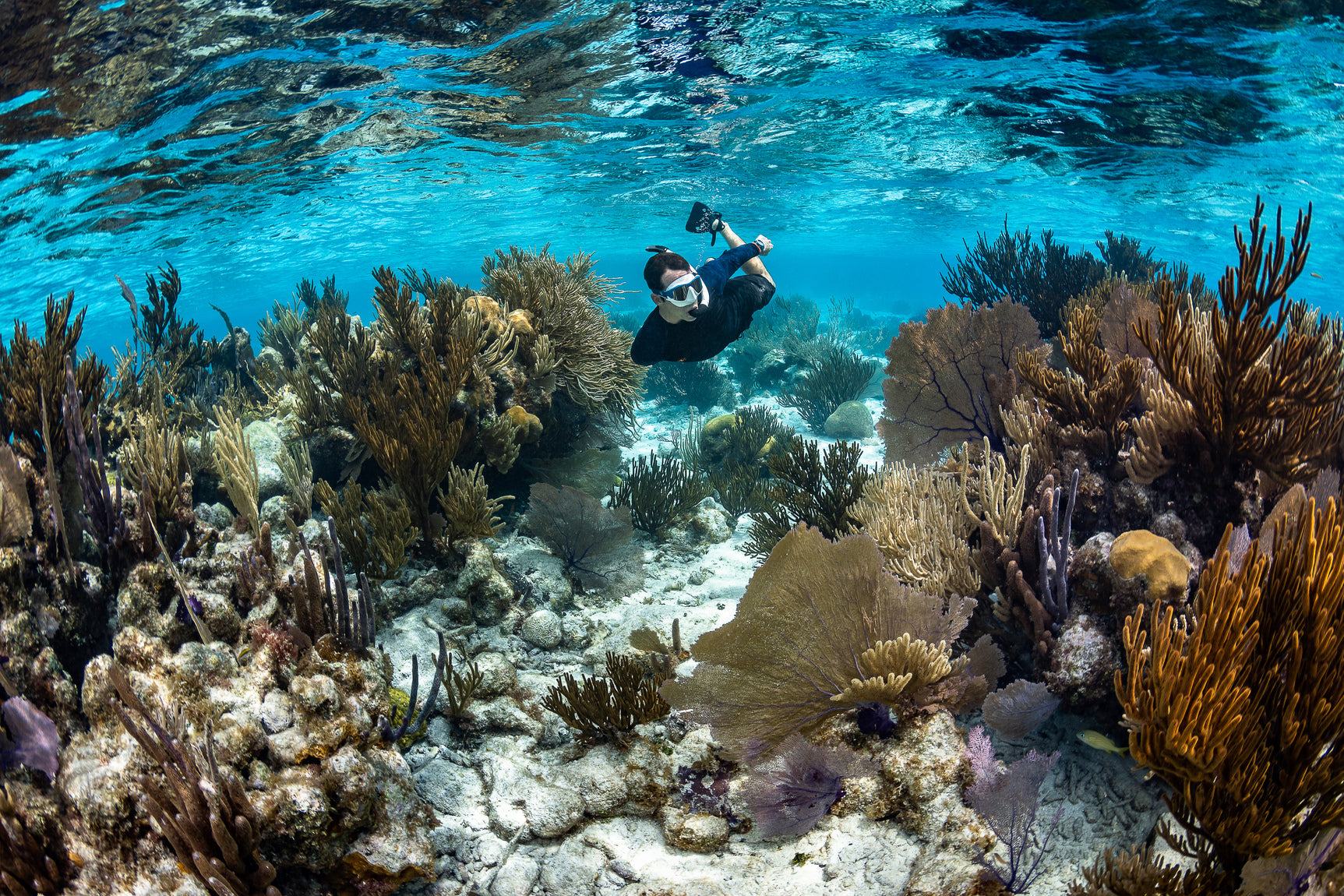Summary:
- Florida is full of beautiful places to snorkel—including many unique locations near Miami, The Florida Keys, and Tampa.
- Most of the snorkeling spots on this list feature clear, warm water and plenty of opportunities to see marine wildlife. Examples include fish, crabs, nurse sharks (which aren’t threatening to humans), dolphins, and manatees.
- A few of the locations mentioned also feature unique underwater landscapes—such as coral reefs, ruins, or fossils.
Yes, snorkeling is inherently fun—but the best part is exploring stunning underwater environments. Whether you’re new to this underwater activity or are already comfortable using masks and fins, you’ll want to find the best spots around to spot marine plants and animals in breathtaking surroundings (don’t worry; as long as you use high-quality snorkel equipment, your breath should be just fine).
Santa Barbara Aquatics is owned and operated by experienced diving pros who have firsthand experience exploring some of the most beautiful snorkeling and scuba spots in the world. Below, we’ll show you 10 of our favorite Florida finds so that you can make the most of your next trip to The Sunshine State.
See Also:
Snorkeling Near the Florida Keys
#10: Dry Tortugas
You’ll need to take a seaplane or boat to reach these unique islands approximately 70 miles from Key West, but the trip is worth it—we promise. The water in this area is crystal clear, and the sheer variety of marine life that inhabits it means you’ll almost certainly make a few new friends.
#9: Bahia Honda
The sights above the water at this State Park are nearly gorgeous enough to rival the rock formations and soft beds of seagrass beneath. The palms along the shoreline and historic architecture are quintessentially Floridian. Meanwhile, the abundance of lobsters and starfish that hang out underneath the water’s surface indicate that the area is just as popular among ocean critters as it is among visitors and residents.

Via Adobe Stock.
#8: Florida Keys National Marine Sanctuary
Did you know that North America only has one barrier coral reef—and that it’s here in this park? If that wasn’t enough to get you excited, it also happens to be the third largest barrier coral reef on Earth (the others are Australia’s Great Barrier Reef and Central America’s Mesoamerican Barrier Reef System).
Snorkeling Near Miami & Fort Lauderdale
#7: Biscayne National Park
If you’re looking for gorgeous underwater vistas you can visit without venturing too far from Miami, Biscayne National Park is the perfect place. Coral reefs? Check. Old abandoned ships? Check. A mangrove habitat? Sure, why not? There’s a ton to see here, and the water is nearly always the perfect temperature.
#6: Hollywood North Beach Park
Visit this 56-acre stretch of beachfront near Fort Lauderdale to experience stunning blue water and a plethora of ocean wildlife—including sea turtles and nurse sharks (slow-moving bottom dwellers that almost always leave humans alone unless actively provoked).
Snorkeling Near Tampa & St. Petersburg

Via Adobe Stock.
#5: Fort De Soto
The turquoise waters surrounding this popular tourist destination are a good enough reason to snorkel here, but there’s one major reason Fort De Soto makes our list—it’s one of the only places on this list where you can count on being able to swim with families of manatees! These gentle giants are docile but curious, making them excellent underwater companions for a day (just don’t touch them, please—how would you like it if strangers were always coming up and touching you?).
#4: Old Fort Dade
Fort Dade dates back all the way to the Spanish-American war, although most of it now exists beneath the waves surrounding Egmont Key. Still, that’s good news for snorkelers, who can spot all kinds of interesting sea creatures inhabiting these structures—including dolphins!
#3: Point of Rocks
An excellent snorkeling opportunity for families with younger children, Point of Rocks is located in Siesta Key, at one end of Crescent Beach. The water is only a few feet deep here, and always calm—so it’s easy to keep track of your little ones. But there’s plenty for adults to see here, too; the limestone rocks under the water for which the area is named create unique formations that attract fish, crabs, small sharks, and occasionally dolphins and manatees as well. This is easy-access snorkeling at its finest.
Snorkeling Spots Off the Beaten Path

Via Adobe Stock.
#2: Devil’s Den
A subterranean natural pool surrounded by stalactites and fossil beds? Yes, there’s something a little spooky about this spot (but with a name like “Devil’s Den”, what did you expect?). But it’s also unlike any of the other entries on this list. Another unique thing about Devil’s Den is that it’s inland—that’s right, you’ll need to drive to Williston for this one. And since it’s privately owned, there’s also a price for admission… but we think it’s more than worth it.
#1: Silver Glen Springs
Ocala National Forest on the shores of Lake George is home to this universally-beloved basin, which offers snorkeling and other aquatic activities in fresh water so clear it might as well be gin (and which always stays a perfect 73 °F). One of the area’s unique features is the presence of middens—which used to be ancient trash heaps used by the village that once occupied the area. Today, these structures contain an array of common items from the period, plus a variety of fossilized snail shells. They’re like little time capsules!
Start Planning Your Florida Snorkeling Adventure Today
Florida is full of incredible snorkeling spots, but we swear by the 10 listed above and believe you’ll love them too. To learn more about snorkeling in Florida—including what kind of gear you’ll need—contact Santa Barbara Aquatics and speak with an experienced professional diver who can help make sure you’re properly prepared for an unforgettable experience.































